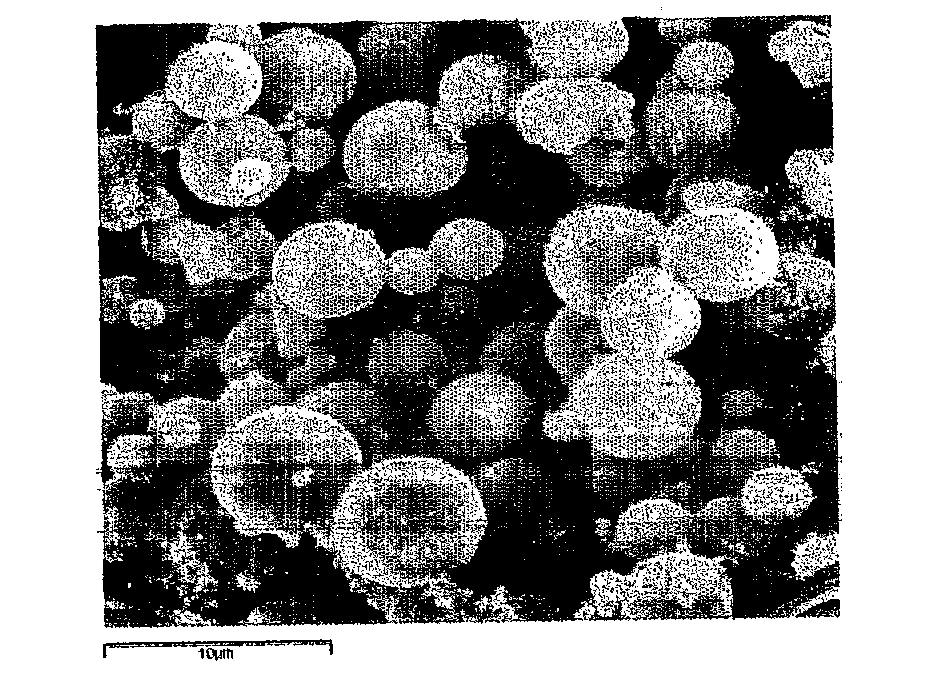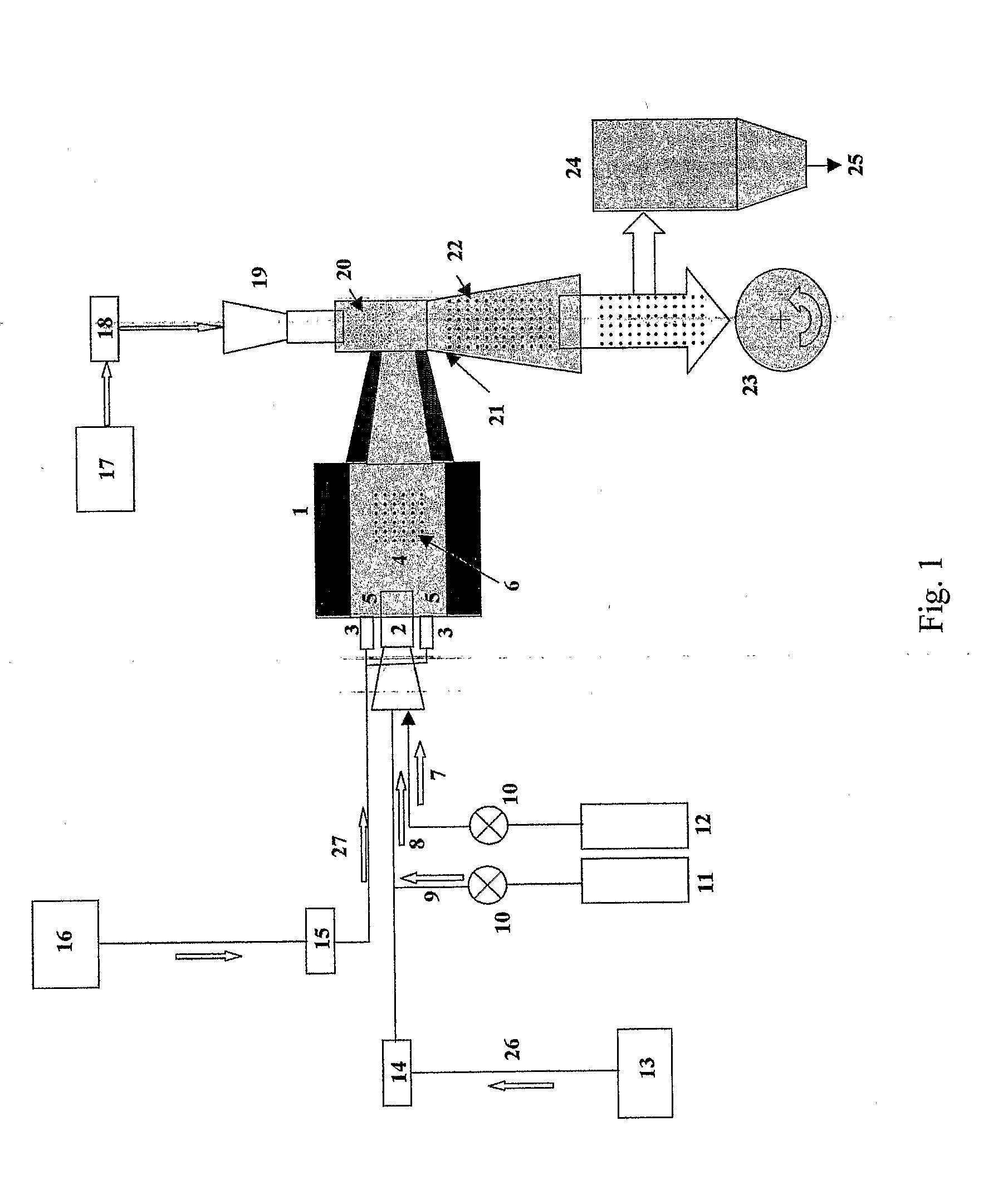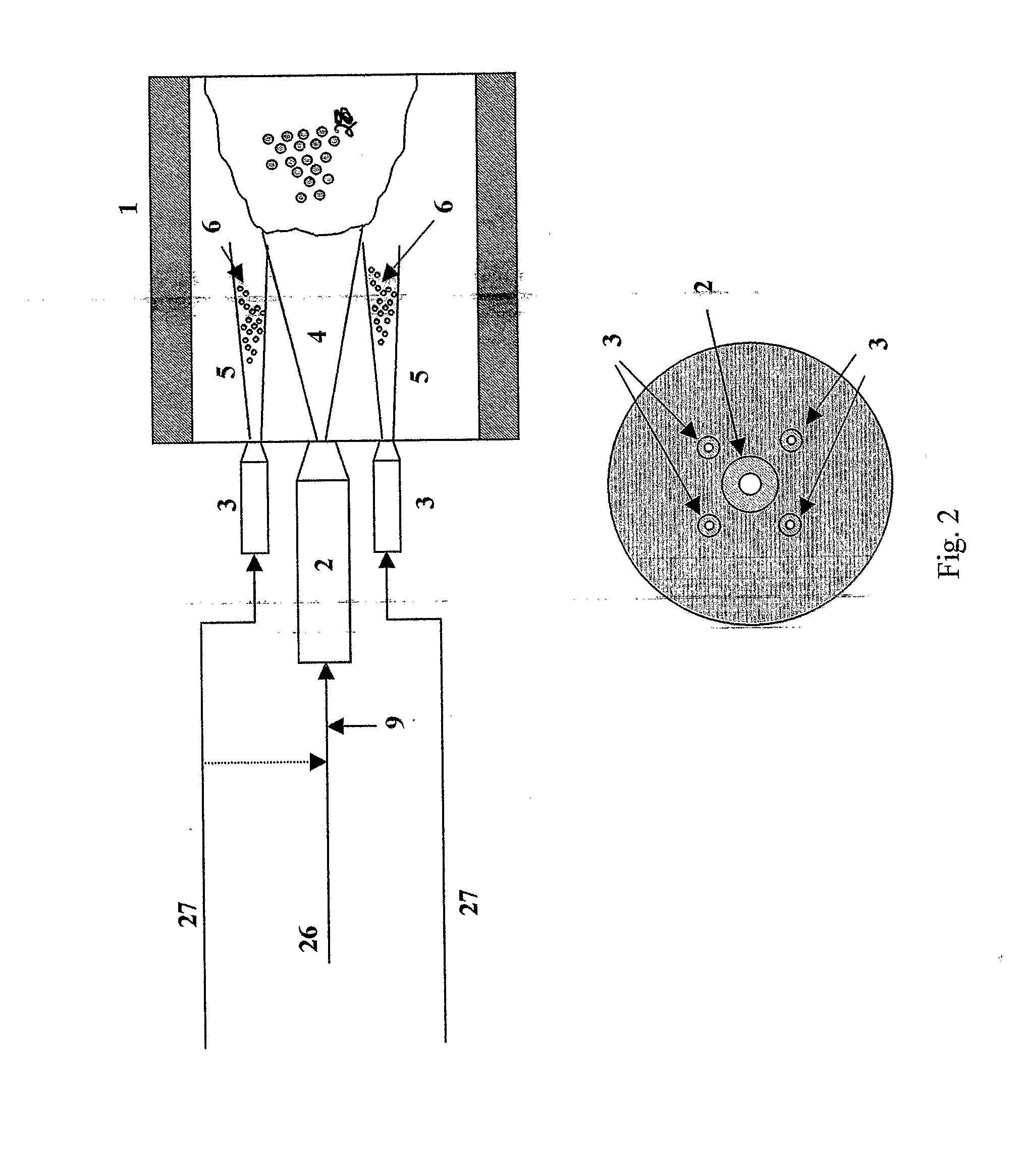Carbonaceous Materials
a carbonaceous material and carbonaceous technology, applied in the field of carbonaceous materials, can solve the problems of high agglomeration, large overall particle size, and limited ability to directly combine carbonaceous materials with other inorganic and organic materials, and achieves high potential for one-step fabrication, enhanced sensitivity, and high aspect ratio and conductivity.
- Summary
- Abstract
- Description
- Claims
- Application Information
AI Technical Summary
Benefits of technology
Problems solved by technology
Method used
Image
Examples
example 1
[0031]Carbonaceous materials are produced utilizing the carbonaceous process of the present invention. Toluene solvent was pumped through the primary atomization nozzle at flow rate of 3 mL / min resulting in formation of fine aerosol that was ignited using pilot flames of premixed methane and oxygen. A coaxial flow around the spray provided oxygen needed to partially combust fine toluene aerosol. Secondary Nanomiser nozzle provided homogenous dense water / nitrogen aerosol that was used to uniformly and rapidly quench the hot combustion products and carbon black particles produced in the flame hot zone. Application of very fine water spray resulted in a more uniform and more rapid quench and production of more uniform and finer carbonaceous materials. Table below summarizes the operating conditions. Samples or carbonaceous material were collected on glass fiber filters and analyzed using transmission electron microscopy. FIG. 3 shows the TEM image of a typical carbon black material pro...
example 2
[0032]Composite particles of polymer, carbon black and magnetite material were produced using the NanoSpray process, hi this example, feedstock consisting of 70% toluene and 30% propane was pumped at 4 mL / min through the primary Nanomiser burner and partially combusted to produce carbon black and hot combustion products. The resulting plume of hot combustion products and carbon black was mixed with the aerosol produced by atomizing the 9 to 20 mL / min of polystyrene solution in acetone and cyclohexane. Polystyrene feedstock granules were dissolved in a 50 / 50 by weight mixture of acetone and cyclohexane to form a 2.5 wt % solution of polystyrene. 10 g per liter of magnetite was added to the solution with stearic acid to help suspend the iron oxide particles. The polymer containing aerosol droplets were heated in the chamber by the gases from a carbon-producing flame. This resulted in production of spherical polymer particles containing magnetite and coated with carbonaceous material. ...
example 3
[0033]Carbonaceous materials coated with platinum nanoparticles are produced utilizing the process of the present invention. Platinum acetylacetonate precursor was dissolved in toluene solvent at concentration of 100 nM and pumped through the primary nozzle at flow rate of 2 mL / min resulting in formation of fine aerosol that was ignited using pilot flames of premixed methane and oxygen. A coaxial flow around the spray provided oxygen needed to partially combust fine toluene aerosol, evaporate solvent, and react the platinum precursor, which resulted in formation of platinum nanopowders and carbonaceous nanomaterial. Secondary Nanomiser nozzle provided homogenous dense water / nitrogen aerosol that was used to uniformly and rapidly quench the hot combustion products, platinum and carbon black particles produced in the flame hot zone. Table below summarizes the operating conditions. Samples or intermixed platinum and carbonaceous material and carbon black coated with platinum nanopowder...
PUM
| Property | Measurement | Unit |
|---|---|---|
| Length | aaaaa | aaaaa |
| Length | aaaaa | aaaaa |
| Length | aaaaa | aaaaa |
Abstract
Description
Claims
Application Information
 Login to View More
Login to View More - R&D
- Intellectual Property
- Life Sciences
- Materials
- Tech Scout
- Unparalleled Data Quality
- Higher Quality Content
- 60% Fewer Hallucinations
Browse by: Latest US Patents, China's latest patents, Technical Efficacy Thesaurus, Application Domain, Technology Topic, Popular Technical Reports.
© 2025 PatSnap. All rights reserved.Legal|Privacy policy|Modern Slavery Act Transparency Statement|Sitemap|About US| Contact US: help@patsnap.com



